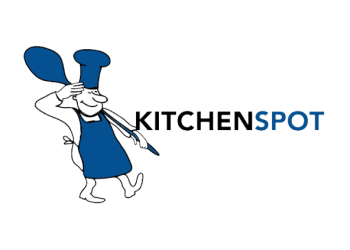A kitchen is a place where magic happens. It’s where all your favorite dishes are made. It’s also a place with countless hazards. The most common form of hazard in the kitchen include fires, burns, cuts, falls and electric shocks, pretty much all hazards that we would like to avoid.
Apart from these hazards, a kitchen can also be a source of foodborne illnesses, and extreme hygiene and food safety measures need to be taken to prevent illnesses.
Today, let’s look at how you can reduce the hazards that you are likely to face in a kitchen by following the steps below:
KEEP YOUR FEET COVERED
When you’re cooking, it’s always a good idea to put on your kitchen safety shoes. The safety shoes will provide additional protection from falling objects, shattered glass, hot water, and oil spills.
Safety shoes help create a barrier between your foot and a falling knife, a heavy platter, or hot gravy, in addition to protecting you from broken bits.
DRESS FOR SAFETY
Avoid baggy clothes when working in the kitchen, or dangling jewellery. Anything dangling may catch on to anything, from a pot with boiling water, to an open flame. Tops with fitting sleeves or no sleeves are the most suitable option. As a safety precaution, avoid any flammable or synthetic clothing while in the kitchen.
KitchenSpot stock a variety of safety footwear for kitchen and other industrial use. KitchenSpot are distributors for Portwest England, who is a global leader in safety equipment.

PREVENT CUTS
While it might seem counterintuitive, keep your knives sharp by sharpening occasionally. A dull knife is more likely to slip and cause injuries than a sharp one. Learn how to use knives for various purposes, as well as being able to choose the right knife for the task at hand.
While that extra spread or cream on the knife can be tempting, avoid licking off food from the knife as it can cut your tongue. Be careful with the blades on food processors and blenders; they can be very sharp and cause cuts at a simple touch.
Check with us for quality knives and other kitchen gadgets.
PREVENT BURNS
Burns are among the most common forms of injuries sustained in the kitchen. To minimise chances of burn accidents, keep the following tips in mind:
- Keep pot handles turned away to avoid accidentally knocking the pot off
- Use pot-holders or oven mitts
- Practice caution when moving boiling water
- To avoid splashing, heat the oils gradually.
- Be wary of steam when lifting covers off a boiling pot, it can cause burns just as easily as a boiling liquid or a hot burner.
PREVENT FALLS
A wet floor is a major hazard and will almost guarantee a fall. Slipping and falling can lead to muscle and bone injury, but falling while carrying sharp or breakable objects multiplies the risk of serious injury.
To prevent falls, wipe all spills immediately and keep walking areas clear. Walk slowly when carrying something heavy or hot.
Did you know?
You can get Wet Floor/Dangerous warning signs at KitchenSpot. We now offer a comprehensive solution to your safety needs. Our safety products include outdoor safety shoes, fire extinguishers, first aid kits, cut resistant gloves, disposable gloves and anti-bacterial surface wipes.
PREVENT AND EXTINGUISH FIRES
Things to do to prevent fire incidents.
- Never leave dishes unattended while cooking, and avoid distractions such as using phones
- Never cook if you are under the influence of heavy medications that are likely to make you feel drowsy.
- Once you finished cooking, always make sure that all oven and stove dials are turned off
- Do not keep flammable items such as furniture, curtains, dish towels near fire sources.
- Keep other combustible objects like mosquito repellents away from the stove.
- Have a well ventilated kitchen to prevent the build-up of carbon monoxide from gas cooking appliances.
Learn about fires
Regardless of the type, a fire needs air to survive, by cutting off the air supply to the fire you might be able to put out the flames. This could include placing a lid on a burning pan, dousing it with baking soda, or using a fire extinguisher. As soon as the fire starts, call the fire department and do your best to keep it under control until the professionals arrive. When in doubt, leave the premises right away. Your safety and of those around you is key.
Learn how to use a fire extinguisher
Nobody expects a fire in their kitchen, but if one does break out, you’ll be glad you have a fire extinguisher on hand. It is critical that you understand how to use it and keep it in a convenient location.
Knowing in advance how to use your fire extinguisher is critical. There won’t be time to read instructions once a fire has started, and it doesn’t take long for a fire to become uncontrollable.
KitchenSpot also offers fire extinguishers in different sizes.
ELECTRICITY SHOCKS
Read appliance instruction manuals and understand how to use the appliances. Never operate an appliance with a frayed cord. Electric appliances should be kept dry and away from water.
Allow appliances to cool before cleaning them. Also, never use an appliance for unintended purposes. Before touching sharp edges, make sure all appliances are unplugged.
FIRST AID
You should make sure you have a first aid kit handy in the kitchen. It should include all necessary items for various types of injuries that may be sustained in a kitchen.
To wrap it up…
It takes preparedness, focus, and having the right tools to keep a kitchen safe. We hope that our kitchen safety tips will help you improve the safety of your kitchen to keep both you, your team members and your guests safe.
If you would like one of our consultants to work with you in finding the right tools to improve your kitchen safety, call us on +255 699 290953 or email us on info@kitchenspot.co.tz









